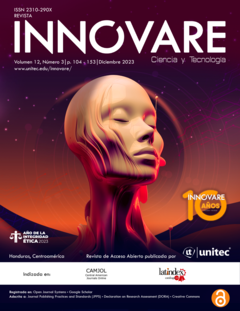The historical minute as a didactic strategy for the achievement of communicative competence
DOI:
https://doi.org/10.5377/innovare.v12i3.17211Keywords:
Active learning, Architecture education, Postpandemic, UniversitiesAbstract
Introduction. The dynamic nature of architecture as profession demands a shift towards competency-based education to enable relevant performance by future professionals. One of the core competencies is communicative skills, which poses a challenge for teachers dealing with students educated during the pandemic. This study described the implementation of the historical minute dynamic to develop communicative competence. Methods. A quasi-experimental, transactional study with a quantitative approach conducted in four sessions within the History of Architecture II class at Universidad Tecnológica Centroamericana (UNITEC) in San Pedro Sula, Honduras. Results. The historical minute dynamic enhanced students' verbal fluency despite not influencing their perception of oral expression skills. It strengthened group work capabilities and creativity in realizing ideas. Conclusion. The perception of oral expression skills by the students themselves suggests refining the didactic strategies in line with the learning styles, to have a more significant impact on the achievement of communicative competence.
Downloads
130
PDF 114
Published
How to Cite
Issue
Section
License
Copyright (c) 2023 Valery A. Ochoa Perdomo, Oswaldo Antonio Rodríguez Reinoso

This work is licensed under a Creative Commons Attribution-NonCommercial-NoDerivatives 4.0 International License.




